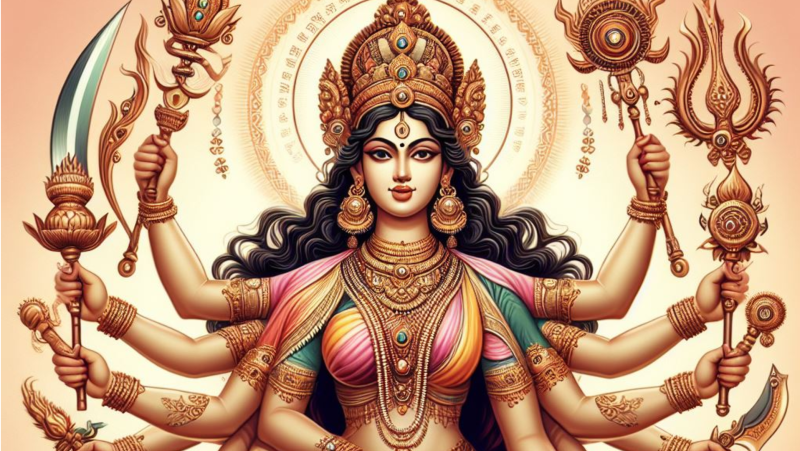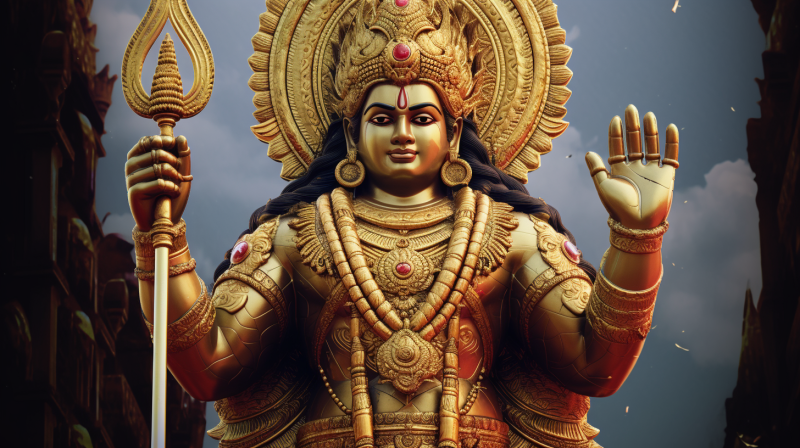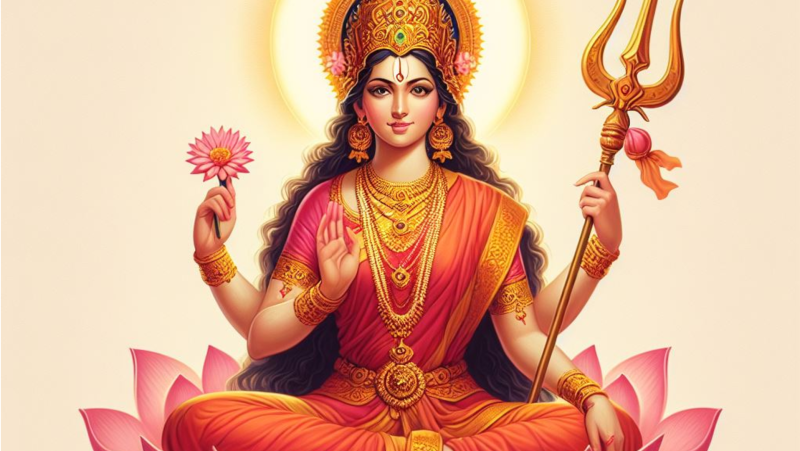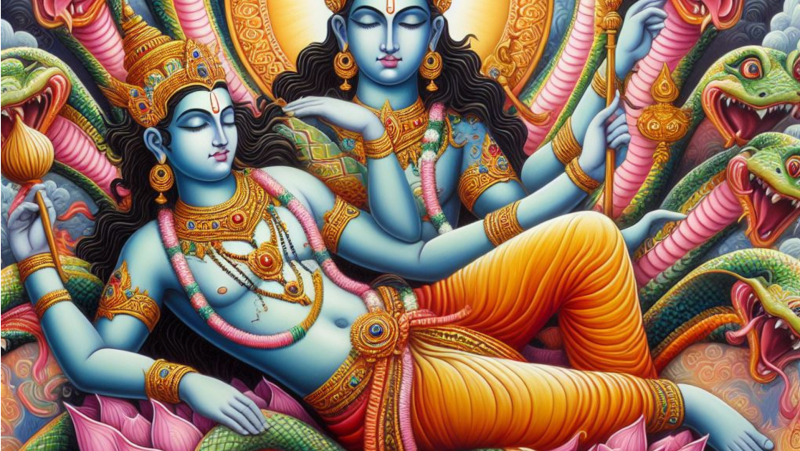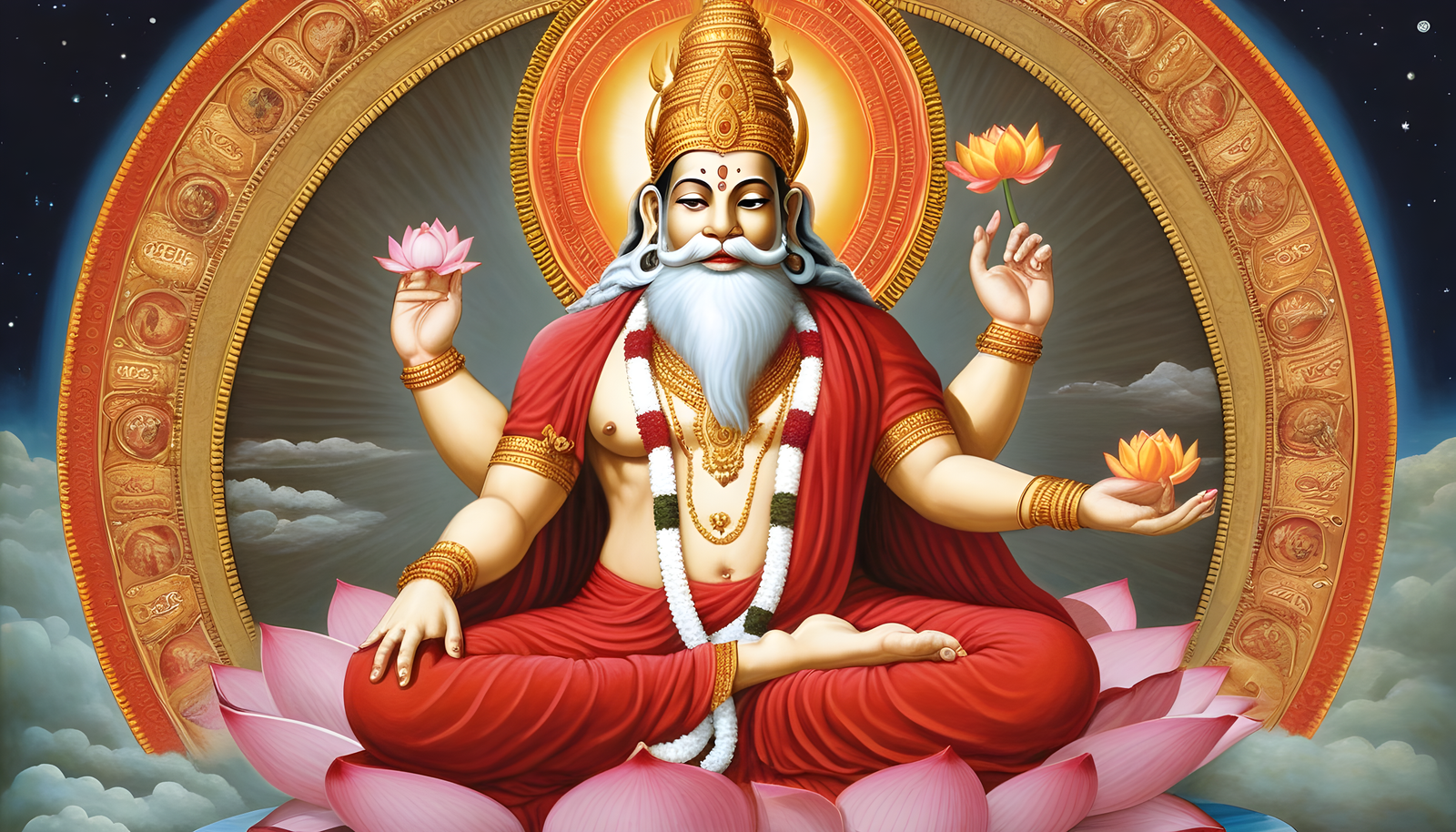
Goddess Saraswati, revered in Hinduism as the embodiment of knowledge, wisdom, arts, music, and learning, holds significant cultural and spiritual importance. Here's detailed information about Goddess Saraswati:
About Attributes and Depiction of Goddess Saraswati
Goddess Saraswati, is depicted with specific attributes and symbolism that signify her divine characteristics. Here's detailed information about the attributes and depiction of Goddess Saraswati:
1. White Attire and Serene Appearance:
• Saraswati is portrayed draped in a white sari or garment, symbolizing purity, peace, and enlightenment.
• Her white attire signifies clarity of thought, purity of mind, and the quest for knowledge devoid of impurities.
2. Veena (Musical Instrument):
• She is often depicted holding a veena (stringed musical instrument), symbolizing creativity, rhythm, and harmony in arts and culture.
• The veena also represents the connection between knowledge and the arts, illustrating the integration of music with learning.
3. Book or Scriptures:
• Saraswati holds sacred scriptures, a book, or scrolls, representing the repository of knowledge, wisdom, and learning.
• The scriptures symbolize the importance of education, literature, and divine wisdom as sources of enlightenment.
4. Lotus and Swan:
• Saraswati is sometimes seated on a white lotus, symbolizing purity, detachment, and spiritual enlightenment amid worldly existence.
• She is accompanied by or riding a swan (hamsa), symbolizing discernment, discrimination, and the ability to separate truth from falsehood.
5. Abhaya Mudra (Blessing Gesture):
• She often displays the Abhaya Mudra, a gesture showing her right hand raised in a blessing pose, symbolizing protection, fearlessness, and dispelling ignorance.
6. Crescent Moon and Jewelry:
• Saraswati may wear a crescent moon on her forehead, symbolizing the cyclic nature of time, creativity, and rejuvenation.
• Adorned with divine jewelry like necklaces, earrings, and bracelets, her ornaments signify divine elegance and grace.
7. Swan Vehicle (Vahana):
• The swan as Saraswati's vahana (vehicle) represents discernment and spiritual knowledge, as the swan is believed to possess the ability to separate milk from water, metaphorically signifying separating truth from untruth.
8. Symbolism of Wisdom and Creativity:
• Saraswati's depiction emphasizes intellect, creative expression, eloquence, and the pursuit of knowledge, inspiring seekers on the path of learning, arts, and spiritual evolution.
9. Flowing River and Creative Energy:
• Her association with the river symbolizes the flow of knowledge, wisdom, and creative energy, nourishing and enriching human life.
Goddess Saraswati's attributes and depiction symbolize the divine virtues of wisdom, knowledge, creativity, purity, and enlightenment. She serves as an inspiration for seekers, artists, scholars, and students, guiding them towards intellectual growth, artistic endeavors, and spiritual elevation.
About Goddess Saraswati As Consort of Brahma
Goddess Saraswati, revered as the consort of Lord Brahma, holds a significant position in Hindu mythology and spirituality. Here is detailed information about Goddess Saraswati as the consort of Brahma:
1. Divine Consort of Lord Brahma:
• Saraswati is regarded as the divine consort of Lord Brahma, the creator in the Hindu trinity. She represents the feminine energy or Shakti aspect of Brahma's creative powers.
2. Symbolism of Creativity and Knowledge:
• Saraswati embodies the creative aspect of Brahma's divine abilities. She symbolizes the primordial source of knowledge, wisdom, and the arts required for creation.
3. Creative Collaboration:
• Saraswati assists Lord Brahma in the act of creation by providing knowledge, wisdom, and the essential elements needed for the formation of the universe.
4. Consort's Role in Creation:
• As Brahma's consort, Saraswati plays a crucial role in the creation and sustenance of the cosmos. Her creative energies complement Brahma's role as the creator.
5. Patroness of Learning:
• Saraswati's association with Lord Brahma accentuates her role as the patroness of learning, arts, education, and intellectual pursuits.
6. Symbolic Harmony:
• The divine union of Saraswati and Brahma symbolizes the harmony between feminine and masculine energies in the act of creation, emphasizing the balance needed for cosmic order.
7. Spiritual and Mythological Significance:
• Saraswati's role as Brahma's consort signifies the importance of knowledge, wisdom, and creative intellect in the cosmic process, guiding seekers on the path of enlightenment.
8. Depiction in Iconography:
• In depictions, Saraswati is often depicted seated alongside Brahma, symbolizing their association in the act of creation and knowledge.
9. Importance in Rituals and Worship:
• Saraswati is revered along with Brahma in various rituals and worship ceremonies, particularly during Saraswati Puja and Vasant Panchami, where devotees seek blessings for knowledge and academic success.
10. Spiritual Balance and Creation:
• The divine association of Saraswati as Brahma's consort represents the harmonious union of feminine Shakti and masculine creative energy, emphasizing the importance of balance and cooperation in the cosmic cycle.
Goddess Saraswati's role as the consort of Lord Brahma emphasizes the integral relationship between knowledge, creativity, and the cosmic act of creation in Hindu mythology. Their union signifies the essential balance required for the sustenance and evolution of the universe.
About Goddess Saraswati Symbolism
Goddess Saraswati, is associated with various symbols that represent her attributes and significance. Here are the key symbols associated with Goddess Saraswati and their symbolic meanings:
1. Veena (Vina): The veena, a musical instrument often depicted in Saraswati's hands, symbolizes the harmony and creative energy present in the universe. It signifies the importance of music, arts, and culture in spiritual and worldly life.
2. Pustaka (Book): Saraswati is often depicted holding a sacred book or scripture, symbolizing knowledge, education, and wisdom. It represents the pursuit of learning and the importance of scholarly pursuits.
3. Aksharamala (Rosary or Garland of Beads): The aksharamala symbolizes the continuous flow of knowledge and wisdom. It represents Saraswati's role in guiding seekers towards spiritual and intellectual enlightenment.
4. White Swan (Hamsa): Saraswati is associated with a white swan, known for its purity and discernment. The swan symbolizes discrimination, wisdom, and the ability to distinguish between right and wrong, truth and falsehood.
5. White Clothing: Goddess Saraswati is often depicted wearing white clothing, representing purity, simplicity, and tranquility. White is symbolic of the highest truth and spiritual knowledge.
6. Lotus: The lotus, a revered flower in Hinduism, is associated with Saraswati. It symbolizes purity, enlightenment, and spiritual growth. Saraswati is often depicted seated on a lotus, signifying her connection with divine consciousness.
7. Swan Riding on a Peacock: In some depictions, Saraswati is portrayed riding a swan while accompanied by a peacock. This symbolizes the union of wisdom (swan) and worldly beauty and grace (peacock), suggesting the balance between spiritual knowledge and the aesthetics of life.
8. Crescent Moon: Occasionally, Saraswati is depicted with a crescent moon adorning her forehead. The moon symbolizes the mind and emotions, signifying her influence over the realm of thoughts and feelings.
These symbols collectively embody the essence of Saraswati's divine qualities, emphasizing the pursuit of knowledge, creativity, spirituality, and the importance of discernment and purity in one's journey toward enlightenment and wisdom. Each symbol associated with Goddess Saraswati reflects profound spiritual and philosophical meanings within Hindu mythology and iconography.
Goddess Saraswati Names
Goddess Saraswati, the Hindu deity is revered with various names that signify different attributes and aspects of her divine nature. Here are some of the names and epithets of Goddess Saraswati:
1. Saraswati: The primary name of the goddess, derived from the Sanskrit words "sara" (essence) and "swa" (self), meaning "the essence of the self." It reflects her embodiment of knowledge, wisdom, and creativity.
2. Vagdevi: Meaning "goddess of speech," emphasizing Saraswati's association with eloquence, communication, and linguistic abilities.
3. Vani: This name denotes Saraswati as the goddess of speech and articulation. It signifies her role in imparting knowledge and wisdom through speech.
4. Bharati: Referring to Saraswati as the bestower of knowledge and eloquence. The term also signifies the brilliance and luminosity of intellect.
5. Sharada: Derived from the word "sharas" (autumn), it symbolizes the ripening and fruition of knowledge. Saraswati as Sharada represents the goddess of learning and education.
6. Vidyadayini: Signifying "the giver of knowledge," highlighting Saraswati's role as the bestower of wisdom and learning.
7. Savitri: Referring to Saraswati as the consort of Lord Brahma, symbolizing the creative force behind the universe and the divine power of knowledge.
8. Hamsavahini: Meaning "one who rides a swan (hamsa)," the swan symbolizes wisdom, discernment, and discrimination. Saraswati is often depicted riding a swan, denoting her ability to discriminate between truth and illusion.
9. Mahavidya: Refers to Saraswati as one of the ten Mahavidyas, the supreme forms of the Goddess representing various aspects of divine knowledge and power.
10. Shatarupa: This name signifies Saraswati's multifaceted nature, as "Shata" means hundred, and "rupa" means forms. It represents her myriad aspects and manifestations.
These names and epithets of Goddess Saraswati highlight her diverse attributes, powers, and roles as the bestower of knowledge, creativity, and wisdom in Hindu mythology and spirituality.
About Saraswati Meaning
The name "Saraswati" has deep roots in Sanskrit, an ancient Indo-European language. It is derived from two Sanskrit words: "Sara" and "Swati."
1. Sara (सार): The term "Sara" means essence or the essential aspect. It implies the quintessential nature, core, or vital element of something.
2. Swati (स्वती): "Swati" refers to oneself or self. It denotes the inherent self, intrinsic being, or the essence of the individual.
When combined, "Saraswati" signifies the embodiment of the essence, the essence of self, or the essence of one's being. It carries a profound meaning that encapsulates multiple facets:
• Essence of Knowledge: Saraswati embodies the essential aspect of wisdom, knowledge, learning, and intellect. The name signifies the divine essence of wisdom and education.
• Essence of Creativity: Saraswati represents the essence of creativity, art, music, and all forms of artistic expression. The name implies the core of creative inspiration and artistic genius.
• Innate Wisdom: The name denotes the inherent wisdom and intellectual brilliance that Saraswati symbolizes. It signifies the essence of intellectual enlightenment and understanding.
• Core of Speech and Expression: Saraswati is associated with eloquence, articulate speech, and expression. The name encapsulates the essence of effective communication and the power of words.
• Spiritual Essence: Saraswati's name implies the essence of spiritual wisdom, guiding individuals towards self-realization and higher consciousness.
In summary, "Saraswati" encompasses the essence of knowledge, creativity, wisdom, speech, and spirituality. It represents the quintessential aspect of intellectual and artistic pursuits, guiding individuals toward enlightenment, self-expression, and deeper understanding.
You may also like …
Are You The Proud Hindu?
The Trimurti
Create an account to join us and start taking part in conversations.
SIGNIN